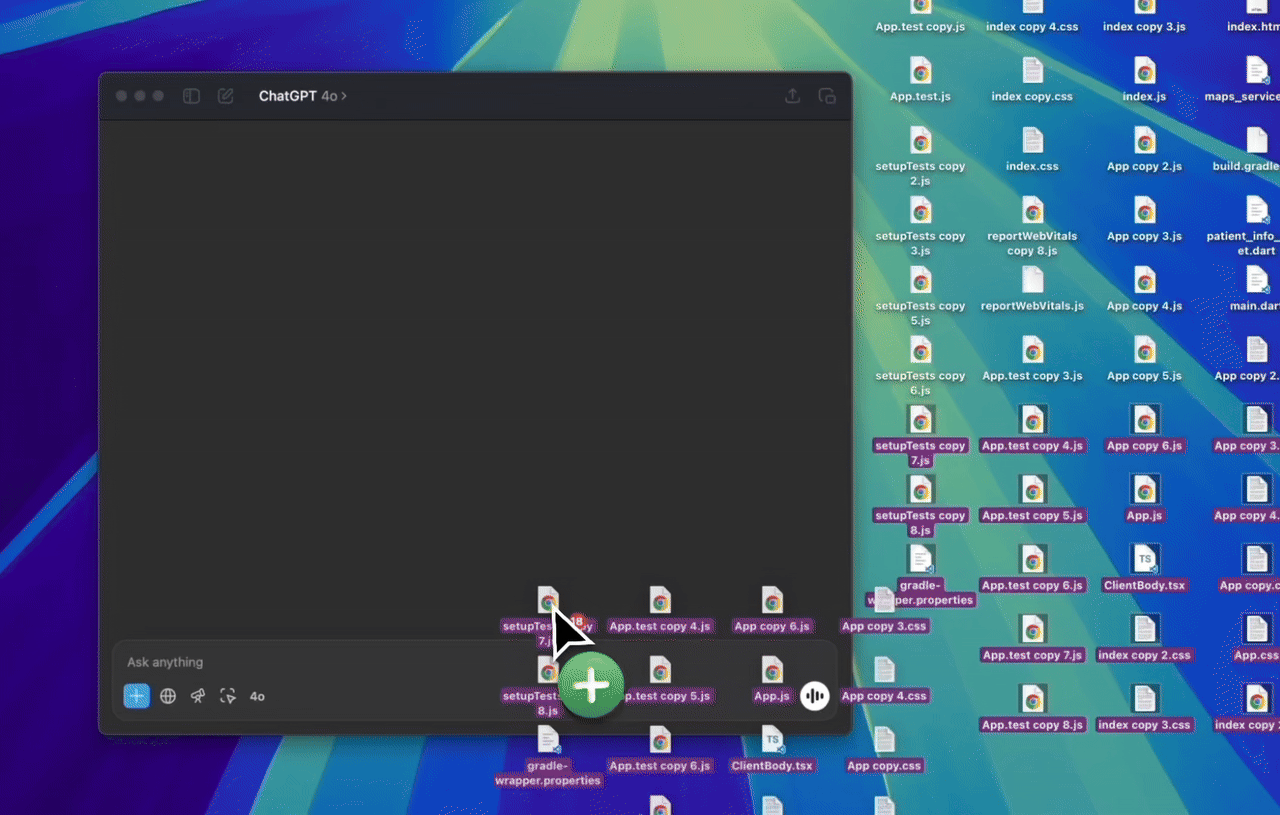Introducing
JamPack
Merge Multiple Code Files intoOne TextFile
Streamline Your Workflow: Merge Numerous Code Files with Ease.

Why You Need JamPack
AI models and code review tools have limits – JamPack helps you work around them.
The Problem
GPT, Claude, and other AI models can't read more than 10 files at once.
- Real projects have dozens or hundreds of files
- Manual copy-pasting is tedious and error-prone
- Context is lost without proper file organization
JamPack's Solution
One simple drag-and-drop to combine multiple files into a perfectly formatted text file.
- Preserves file paths and formatting automatically
- AI-friendly output that maximizes token efficiency
- Customize file order for logical presentation
Frequently Asked Questions
Q: Is JamPack free?
A: Yes, JamPack is 100% free to use and open-source.
Q: Is a Windows version available?
A: Currently, JamPack is macOS-only. Windows support is planned for future releases.
Q: How many files can I merge?
A: Effectively unlimited. Thanks to streaming I/O, the only caps are your disk space and OS file-handle limit.
Q: How does JamPack handle massive data merging?
A: It streams data in 32 KB chunks instead of loading everything into RAM, so memory stays at just a few MB even for gigabyte-scale merges.
Features
JamPack combines powerful features with simplicity to help you efficiently merge code files.
(Merged file must not exceed 500GB)
How JamPack Works
JamPack makes combining multiple code files into a single text file simple and intuitive — in just three easy steps.
Drag multiple files onto JamPack
Just drag and drop your code files directly into the app interface. JamPack accepts most common code file formats.
Select order, edit filenames if needed
Arrange your files in the exact order you want them to appear in the final text. Easily rename files for clarity.
Merge into a single text file
Click merge and instantly get a well-organized text file with all your code, ready to share with AI models or colleagues.